Development of Fonts for African Scripts: Using Computer Technologies to Preserve Africa’s Written Heritage
urn:nbn:de:0009-10-27604
Zusammenfassung
Das Problem der Fonterstellung für moderne indigene afrikanische Schriftsysteme wird kurz besprochen, ebenso wie Kodierungsschwierigkeiten, den Unicode Standard eingeschlossen. Für einige der Schriften werden Schriftproben dargestellt.
Abstract
The issue of the font making for modern indigenous African scripts is briefly discussed. Encoding problems, including the Unicode standard, are addressed. Font samples are presented for some of the scripts.
Résumé
L'issue de la police conduisant aux écritures africains indigènes modernes est brièvement discutée. Des problèmes de codage, y compris la norme d'Unicode, sont abordés. Des échantillons de police sont présentés pour certains des écritures.
<1>
Africa is a homeland of one of the most ancient writing systems, Egyptian hieroglyphs. An ongoing competition with the Sumerian cuneiform for the oldest script will hardly have a sure winner in the nearest future but recently the evidences supporting Africa’s side were revealed (Mitchell 1999).
<2>
In the course of history, new scripts appeared on the African continent, Hieratic and Demotic forms were the simplifications of Egyptian hieroglyphs, Greek-based Coptic and Old Nubian alphabets developed, as well as Punic scripts, Lybian script, Tifinagh.
<3>
Under the influence of the Arabic script, the so-called sub-Arabic (magic and secret) alphabets appeared (Dalby 1968).The adaptations of the Arabic alphabet for recording of African languages (under a general term ajami) are also known.
<4>
Today, three scripts are officially adopted in Africa: Roman, Arabic, and Ethiopic (cf. Pasch 2008). In 2003, Neo-Tifinagh (Tifinagh IRCAM) alphabet was confirmed for an official use in Morocco for the Berber (Tamazight or Amazigh) language (Mafundikwa 2004:46), upon King Mohamed VI’s decision in 2002 (IRCAM n.d.).
<5>
Numerous writing systems are known in Africa in the Modern Age, starting from the 19th century and especially in the course of the 20th century (Dalby 1967; 1969; Coulmas 2004; Mafundikwa 2004; Tuchscherer 2005; 2007; Kootz & Pasch 2008; Rovenchak & Glavy 2009), see Table 1 and Figure 1.
Table 1: Provisional classification of indigenous African scripts
|
Mande syllabaries |
Other West-African alphabets |
Further West-African scripts |
Religious* |
Egypt, Sudan, Ethiopia, Somali |
|
Vai |
N’ko |
Bamum |
Oberi Okaime |
Coptic |
|
Mende |
Bassa (Vah) |
Bagam (Eghap) |
Yoruba Holy script |
Nubian Kenzi alphabet |
|
Kpelle |
Wolof Garay |
Bété |
Mandombe |
New Nubian (Nobiin) |
|
Loma |
Wolof Saaliw wi |
Nwagu Aneke |
Zaghawa Beria |
|
|
Bambara |
Fula Ba |
Aka Umuagbara |
Somali Osmanya |
|
|
Fula Dita |
Somali Gadabuursi |
|||
|
Hausa Raina Kama** |
Somali Kaddare |
|||
|
Hausa Salifou (Gobiri)** |
Oromo |
|||
|
Hausa Tafi** |
* Linked to some indigenous African church.
** For some introductory information on the Hausa scripts having rather limited usage, see this link .
|
Figure 1: Map showing the locations of African script created in the Modern Age. |
|
|
|
Red dots indicate the scripts already represented in Unicode, remaining black circles show the locations of other numerous indigenous African scripts. |
<6>
Usage of the various scripts shows significant variation. A few still have (or had in the past) considerable popularity among the speakers of a particular language (like Vai and Bamum) or a group of languages (like N’ko). Some scripts are/were used within indigenous African churches (Yoruba Holy script, Oberi Okaime, Mandombe). Many scripts are used within smaller communities, reduced sometimes to a particular family or a circle of close friends, and even the so called ‘individual scripts’ are known. It is not always possible to draw a strict dividing line between the script groups within this classification. The process of script creation was urged to a large extent by the end of colonial epoch in Africa in 1950s-1960s as an element of national identity.
<7>
Of all the mentioned African scripts, only a few are represented in the Unicode , an international standard for text representation in the majority of the world’s writing systems. These are:
|
• |
N’ko (07C0–07FF block) |
|
• |
Coptic and Nubian (2C80–2CFF block) |
|
• |
Tifinagh (2D30–2D7F block) |
|
• |
Vai (A500–A63F block) |
|
• |
Somali Osmanya (10480–104AF block) |
|
• |
Bamum (A6A0–A6FF block) |
|
• |
Egyptian hieroglyphs (13000–1342F block) |
<8>
Some scripts are waiting for a final approval which is expected in the nearest future:
|
• |
Meroitic (10980–109FF block) |
|
• |
Old Bamum (16800–16A3F block) |
<9>
The Bamum script and the Egyptian hieroglyphs are the most recent additions to the Unicode ( Version 5.2 ) released in October 2009.
<10>
While these additions will certainly take into account most of the new African scripts being represented by a relatively large amount of texts each (Bamum, Vai, N’ko, and Osmanya), many less popular scripts remain un-encoded and any relevant information exchange is still a big problem.
<11>
For the preparation of Unicode proposals samples of script usage are crucial, and the lack of sufficient indigenous text materials is the main obstacle to develop a proper proposal.
<12>
For many of those non-Unicode scripts various computer fonts were created. This fact facilitates the representation of indigenous African scripts in electronic form, requiring further standardization agreements though. One should note that this is not the problem of non-Unicode scripts only, e.g., most of the N’ko texts available electronically use a couple of pre-Unicode fonts with different character mapping.
<13>
For the scripts covered by the Unicode fonts are available and this makes character shapes more or less standard. One should note, however, that character shapes themselves are not a subject of the Unicode encoding, neither are these shapes superimposed by any Unicode font.
<14>
Many indigenous African scripts presently remain beyond the Unicode. The texts are mostly handwritten and character shapes vary significantly, cf. the variety of Brahmi-derived scripts in India and adjacent lands that appeared due to different writing styles, writing media, etc. before the printing was invented. As indigenous scripts are/were used mostly for personal communication and record keeping, only few appeared in printing with movable type in pre-computer era: Bassa, Osmanya, N'ko, and it is likely that this short list has no other items.
<15>
The change of glyph shapes with the lapse of time is shown in Fig. 2 for the Kpelle script. The respective typefaces are based on different character tables collected by David Dalby (1967) and Ruth Stone (1990), respectively.
|
Figure 2: Kpelle script, samples of different versions |
|
|
|
JG Kpelle A / JG Kpelle B © GlavyFonts, based on Dalby (1967) |
|
|
|
Kpelle New © Andrij Rovenchak, based on (Stone 1990) |
<16>
At present, the fonts for African indigenous scripts, both Unicode and non-Unicode, are known to be created by:
|
• |
SIL: SIL Vai, Zaghawa Beria, etc.; |
|
• |
Evertype: Dukor (for Vai), N’ko, Osmanya, etc.; |
|
• |
Various vendors for separate scripts; |
|
• |
Jason Glavy (GlavyFonts): |
|
• |
the present author: |
<17>
This list, of course, is not intended as a complete one, and any information helping to expand the ‘various vendors’ item is highly appreciated.
<18>
Below, the samples of some of the abovementioned typefaces are given (Figs.3-11).
|
Figure 3: JG Bamum Akauku |
|
|
|
Figure 4: JG Gadabuursi Somali |
|
|
|
Figure 5: JG Mende |
|
|
|
Figure 6: JG Oromo |
|
|
|
Figure 7: AkaUli |
|
|
<19>
This sample of the Aka Umuagbara script represents a poem in the Igbo language. The script was created in the 1980s by Dr. Ogonna Anaagudo-Agu from Calabar (Nigeria), the character shapes are partially based on traditional Uli symbols (Anaagudo-Agu, private communication, 2008).
|
Figure 8: Bambara Ma-sa-ba |
|
|
|
Figure 9: Mandombe |
|
|
|
Figure 10: OberiOkaime |
|
|
|
Figure 11: Wolof |
|
|
<20>
Script materials are highly dispersed; usually the manuscripts are not preserved in good conditions (Tuchscherer 1995). The Bamum script is an exception as a project aiming the preservation of the Bamum script materials was initiated recently.
<21>
Computer fonts can attribute to saving those materials by means of converting them into an electronic form, which is otherwise available only via scanning. Availability of electronic texts is a prerequisite for any broad linguistic analysis, which is yet to be done for texts written in indigenous African scripts.
<22>
Of course, there is something beyond practical applications of the font making, something like a pure interest. And – fortunately – one can take advantage of this pure interest for the preservation of Africa's written heritage.
<23>
Acknowledgements. I am grateful to Fritz-Thyssen-Stiftung for the opportunity to participate in the Workshop 5000 Jahre Schrift in Afrika: Entstehung, Funktionen und Wechsel von Schriftsystemen (November 2008, Köln).
References
Coulmas, Florian 2004
The Blackwell Encyclopedia of Writing Systems. Blackwell Publishing
Dalby, David 1967
‘A survey of the indigenous scripts of Liberia and Sierra Leone: Vai, Mende, Loma, Kpelle and Bassa.’ In: African Language Studies 8:1-51
Dalby, David 1968
‘The indigenous scripts of West Africa and Surinam: Their inspiration and design.’ In: African Language Studies, 9:156-197
Dalby, David 1969
‘Further indigenous scripts of West Africa: Manding, Wolof and Fula alphabets and Yoruba ‘holy’ writing.’ In: African Language Studies, 10:161-181
IRCAM n.d.
Institut Royal de la Culture Amazighe . http://www.ircam.ma/fr/index.php?soc=ircam&rd=5 (25.11.2010)
Kootz, Anja and Helma Pasch (eds.) 2008
5000 Jahre Schrift in Afrika. Universitäts und Stadtbibliothek Köln.
Mafundikwa, Saki 2004
Afrikan Alphabets: The story of writing in Afrika. Mark Batty Publisher
Mitchell, Larkin 1999
‘Earliest Egyptian glyphs.’ In: Archeology, 52, 2:28-29
Pasch, Helma 2008
'Competing scripts: the introduction of the Roman alphabet in Africa.' In: International Journal of the Sociology of Language 191:65-109
Rovenchak, Andrij and Jason M. Glavy 2009
Afrykans’ki systemy pys’ma novoho chasu: region Sub-Sakhary [African Writing Systems of the Modern Age: the Sub-Sahara Region] . New Haven; Lviv; Abidjan: Athinkra. (in Ukrainian)
Stone, Ruth M. 1990
‘Ingenious Invention: The Indigenous Kpelle Script in the Late Twentieth Century.’ In: Liberian Studies Journal XV, 2:135-144
Tuchscherer, Konrad 1995
African Script and Scripture: The History of the Kikakui (Mende) Writing System for Bible Translations.' In: African Languages and Cultures 8, 2:169-188
Tuchscherer, Konrad 2005
'History of writing in Africa.' In: Apiah, Kwame Anthony and Henry Louis Gates, Jr. (eds.) Africana: The Encyclopedia of the African and African American Experience. 2nd edition, pp.476-480. New York: Oxford University Press
Tuchscherer, Konrad 2007
'Recording, communicating and making visible: A history of writing and systems of graphic symbolism in Africa.' In: Inscribing Meaning: Writing and Graphic Systems in African Art, pp.37-53. Smithsonian Institution
Lizenz
Empfohlene Zitierweise ¶
Rovenchak A (2010). Development of Fonts for African Scripts: Using Computer Technologies to Preserve Africa s Written Heritage. Afrikanistik online, Vol. 2010. (urn:nbn:de:0009-10-27604)
Bitte geben Sie beim Zitieren dieses Artikels die exakte URL und das Datum Ihres letzten Besuchs bei dieser Online-Adresse an.
Volltext ¶
-
 Volltext als PDF
(
Taille
959.5 kB
)
Volltext als PDF
(
Taille
959.5 kB
)
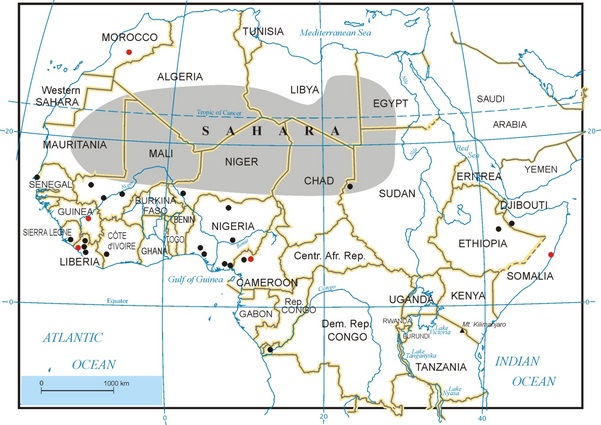


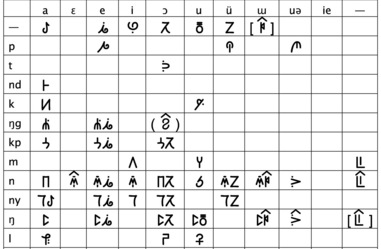
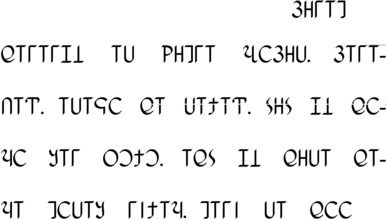

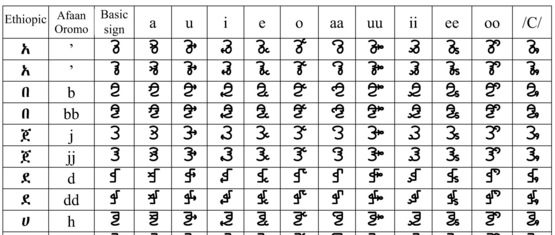
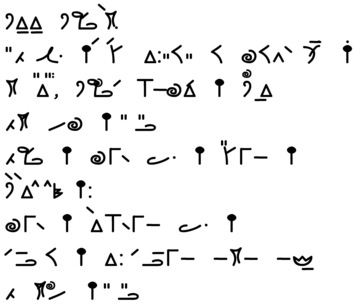
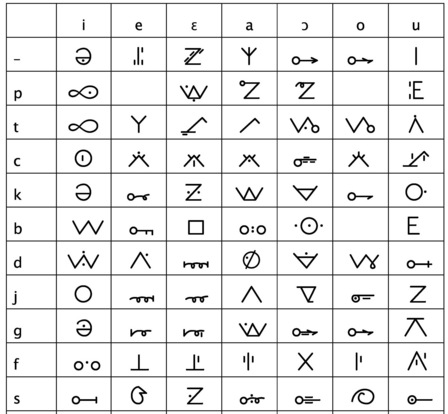

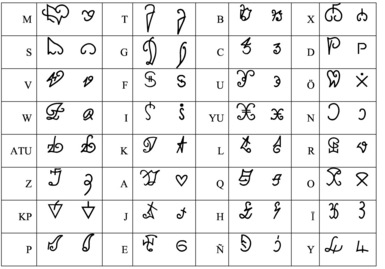
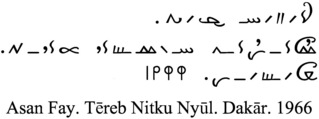

Kommentare ¶
Es liegen noch keine Kommentare vor.
Möchten Sie Stellung zu diesem Artikel nehmen oder haben Sie Ergänzungen?
Kommentar einreichen.